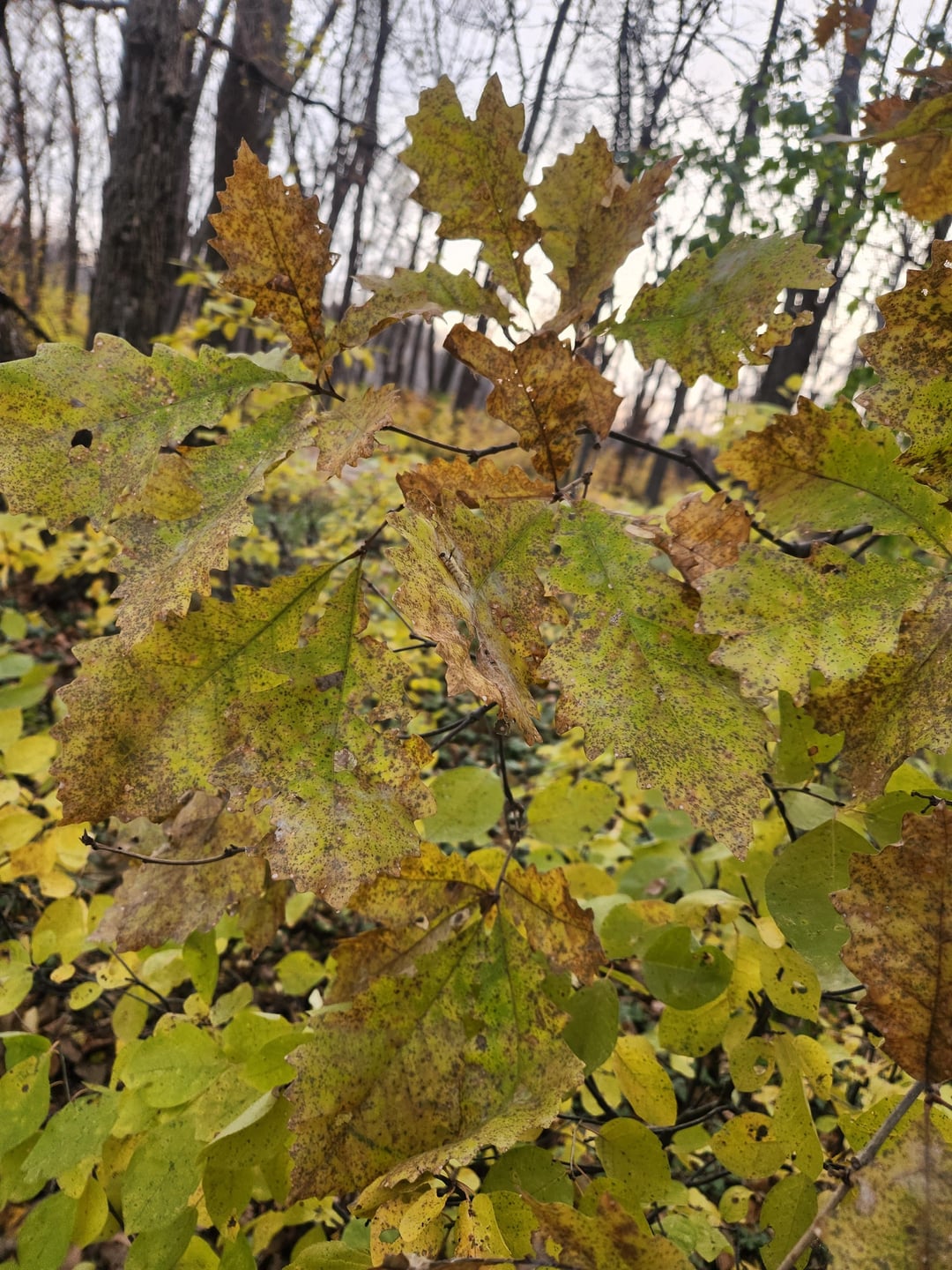
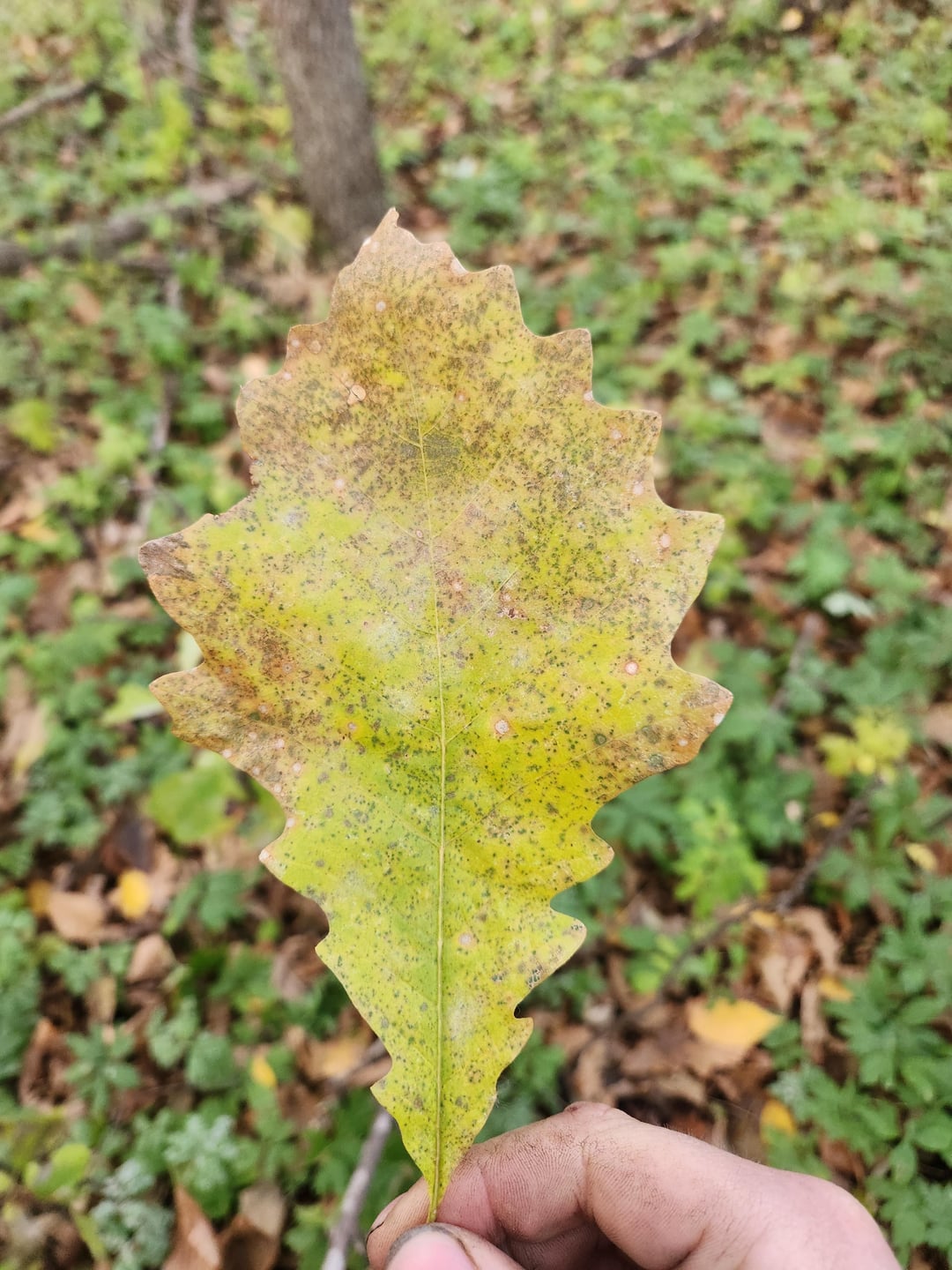


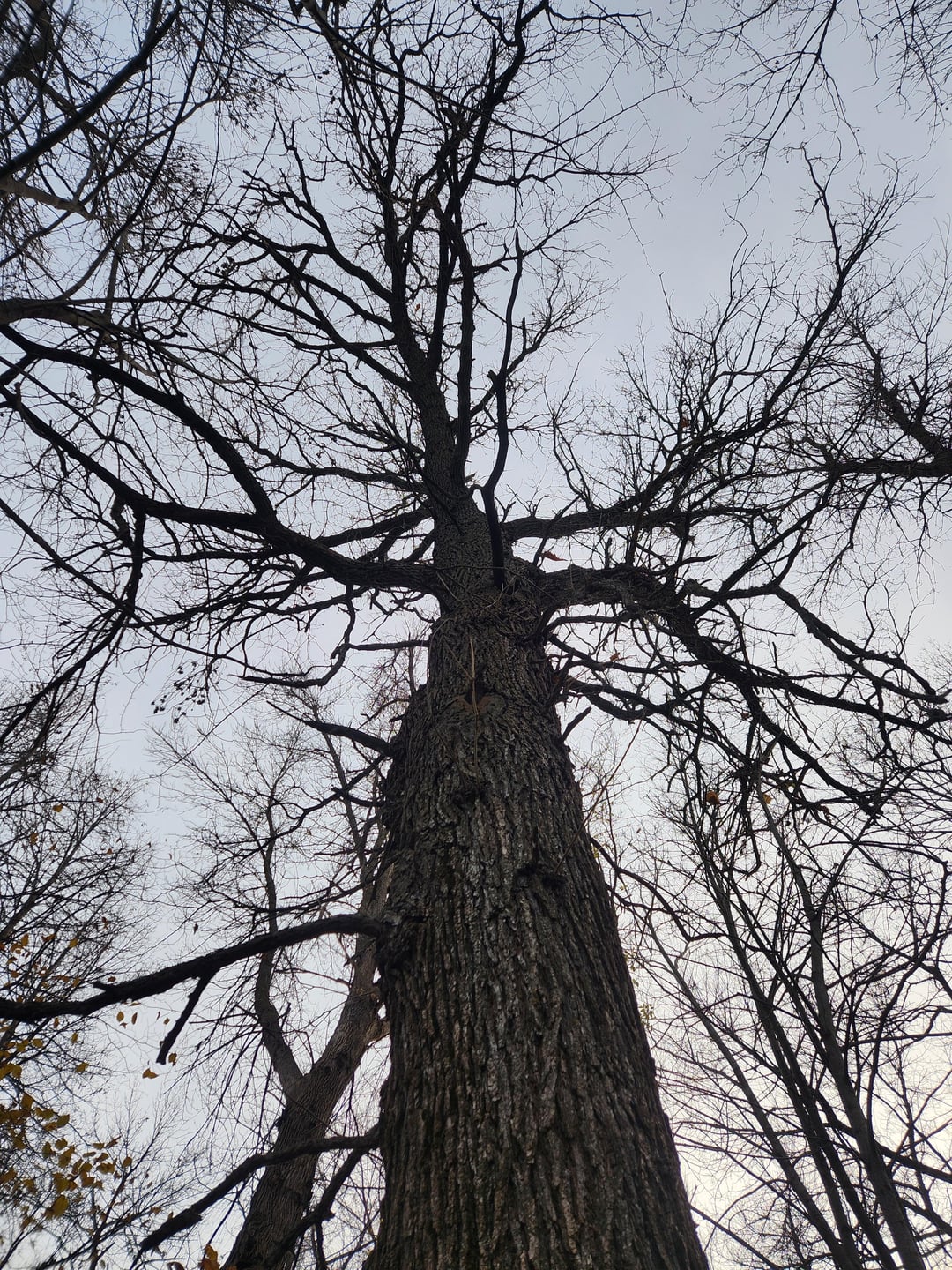

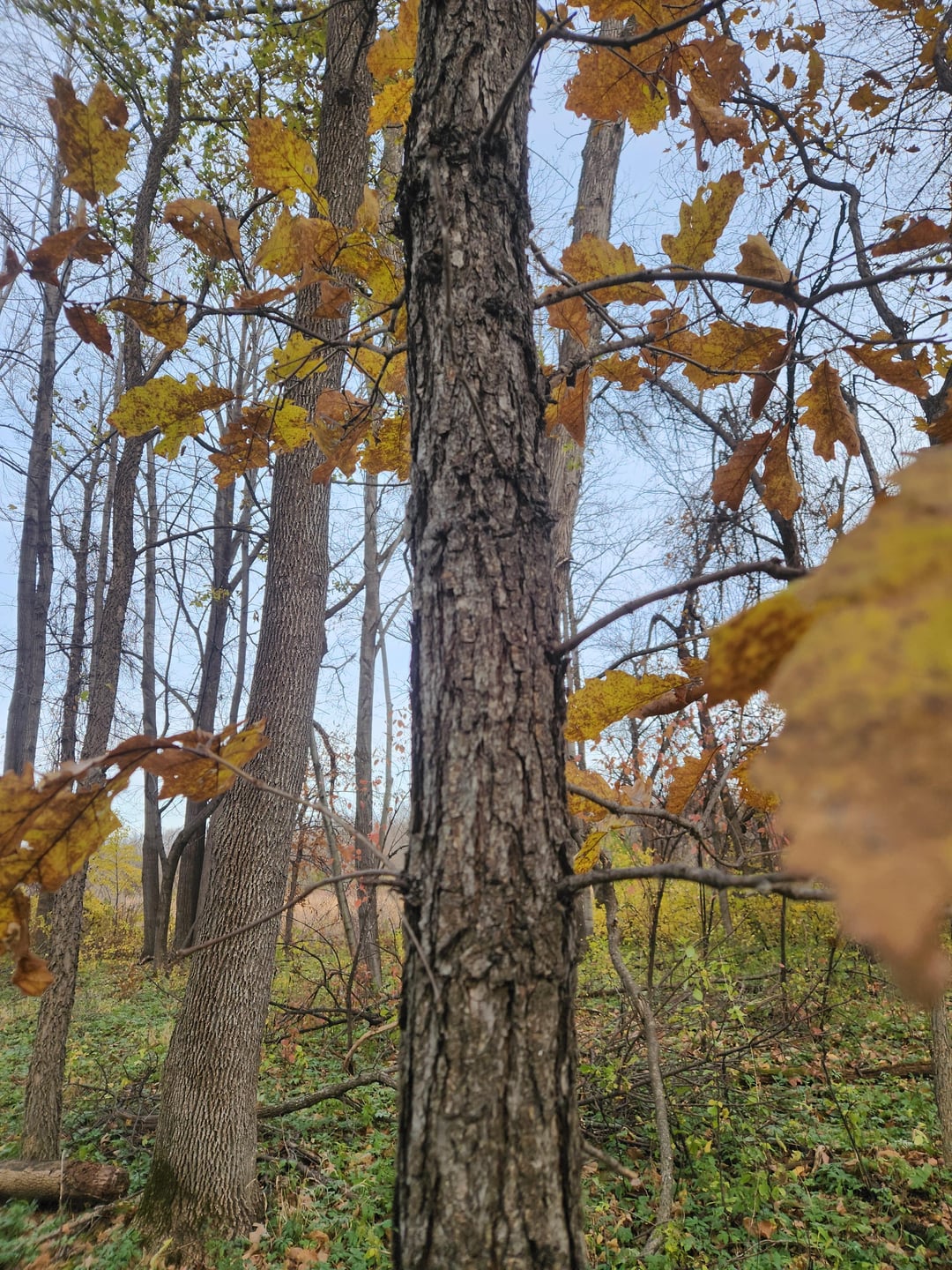
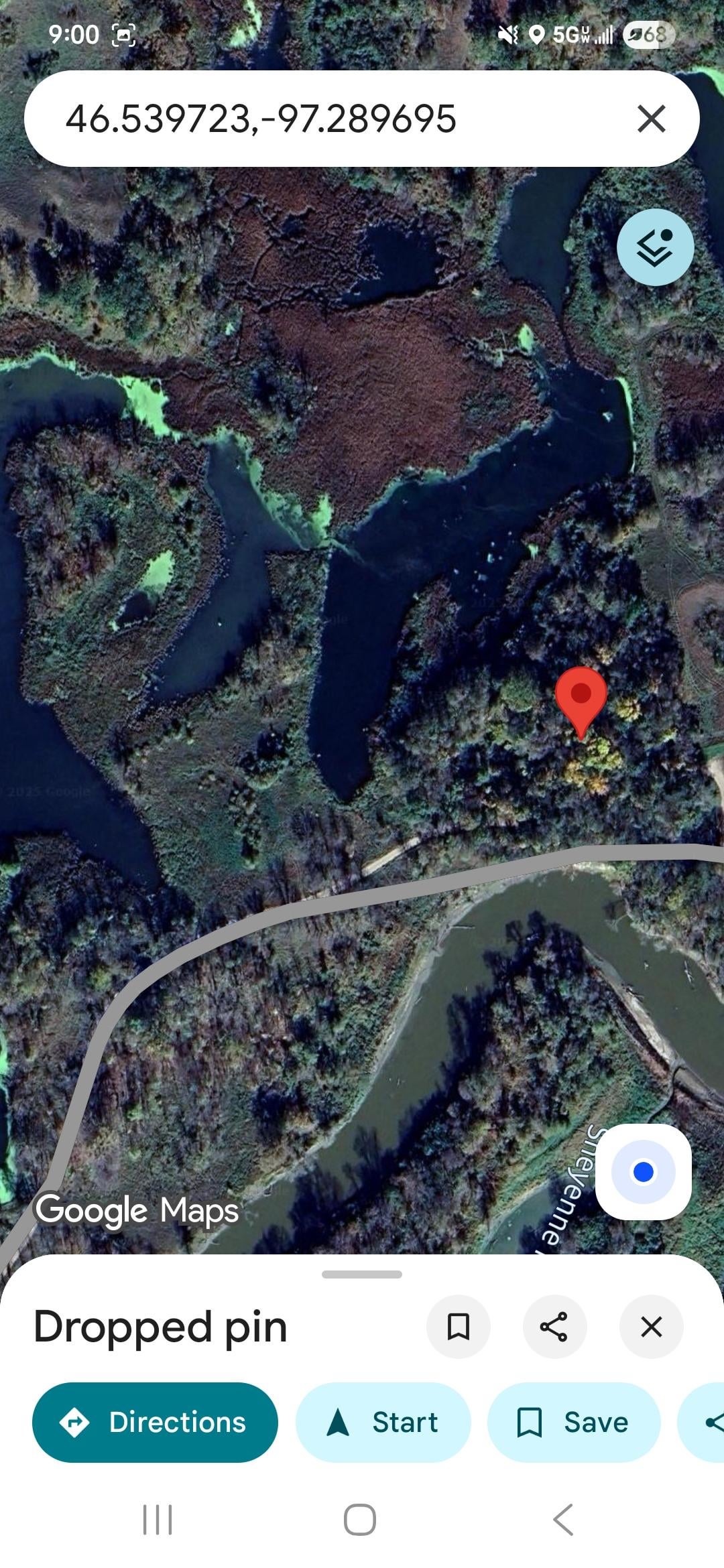
Many of these young oaks exhibit intermediate morphological traits between Q. macrocarpa and Q. bicolor. The leaves are oblong to obovate with shallow, symmetrical sinuses. Some leaves have deeper sinuses towards the bottom more chatacteristic of Q. macrocarpa. The bark is coarse and ridged, and slightly flaky. A few of the young oaks exhibit more typical Q. macrocarpa bark traits, with more blocky ridges and deeper furrows. There is a single, large Q. macrocarpa (Bur Oak) present in this terrace.
I'll explain better the habitat they're present in too: this terrace forest is located on the northern bank of the Sheyenne which is a 30 foot tall cutbank where the river is deeply incised. The elevation gradually drops by a few feet as you walk due north. The northern edge is defined by a series of oxbow lakes and associated wetlands (there's a map photo above). Generally wet to mesic conditions, trending more wet as you approach the oxbows, and more mesic as you approach the cutbank (30 foot tall bluff overlooking the river).
The soil is moderately well drained, loamy alluvium. This terrace is above the active floodplain of the current river, and hosts a block of mesic Ash-Basswood forest from near the cutbank out to where the pin on the map is located. To the north, the canopy composition is the same, but soil conditions trend towards wet-mesic, to hydric at the margins. The subcanopy is a continuous carpet of Hydrophyllum virginianum (Waterleaf), except for the area near the bluff edge. Viburnum lentago is scattered throughout, but absent from the bluff edge region, where Chokecherry (Prunus virginiana) is becoming common. The single, large Bur Oak is located on the "boundary" where soils begin trending more wet.
Ok, with that out of the way, back to the oaks! The traits exhibited by these trees are consistent – and the habitat, a wet-mesic terrace forest above an active floodplain, is the perfect niche for Swamp White Oak. These potential intermediates are regenerating very well. I am honestly leaning towards the possibility that the large individual Bur Oak may be introgressed. Bur Oak is completely absent from this entire terrace, only becoming abundant on upslope sites above the floodplain and terraces. Closest stand of Bur Oak is a half mile west in upslope Oak-Aspen woodland.
The only oak regeneration of ANY kind is from these oaks in this terrace. Other areas of the river do not exhibit any signs of oak regen. in related forest types. I have no way to confirm if they are hybrid (Quercus x schuettei) or not, but it REALLY seems like it! Sorry for the long post!
by KagamiRyuunosuke


Comments are closed.